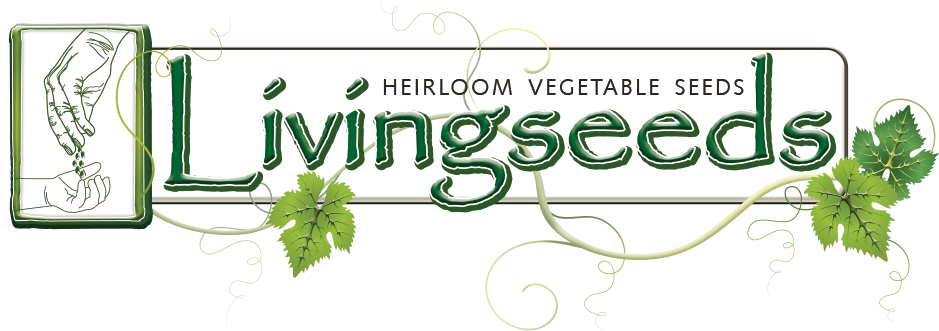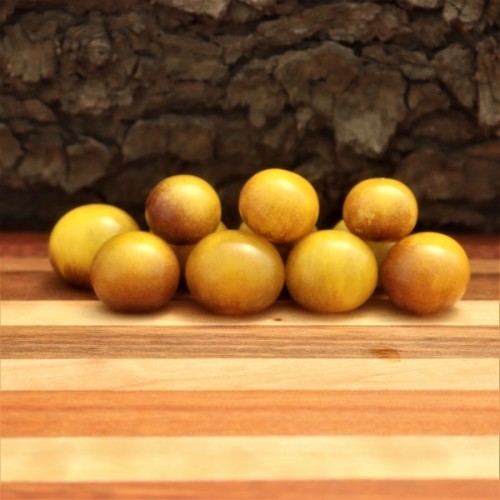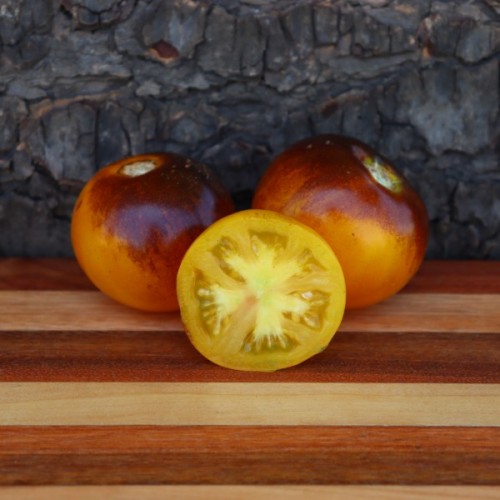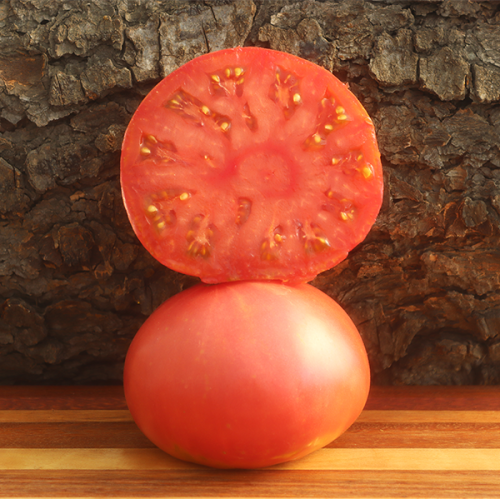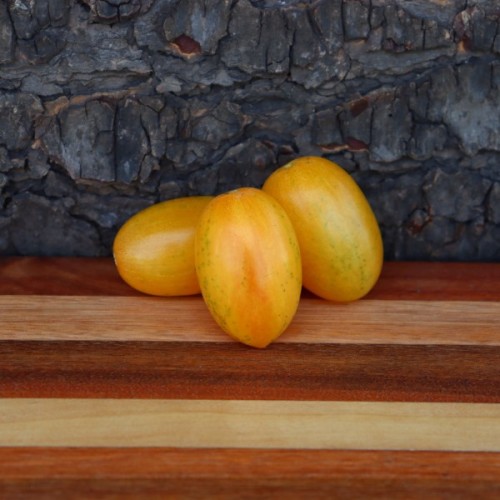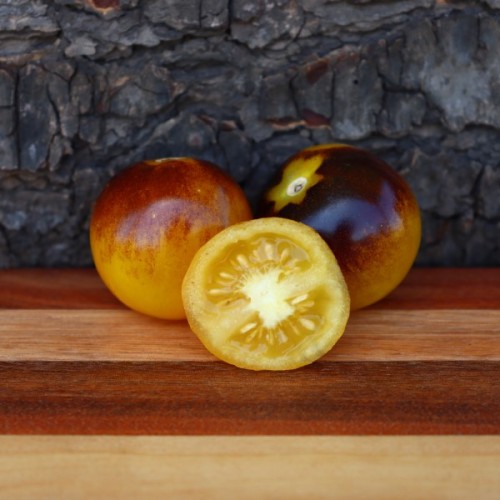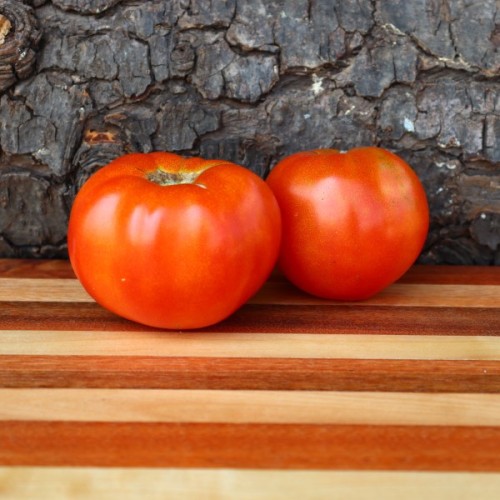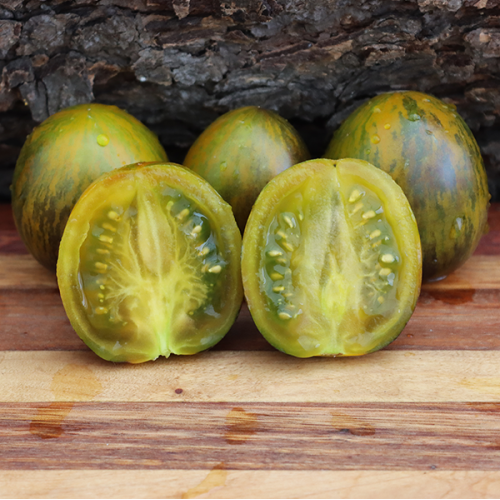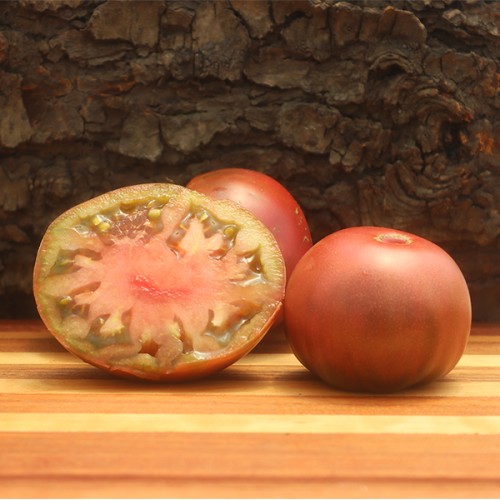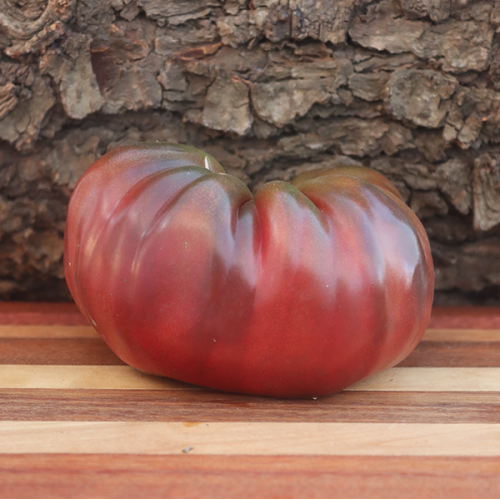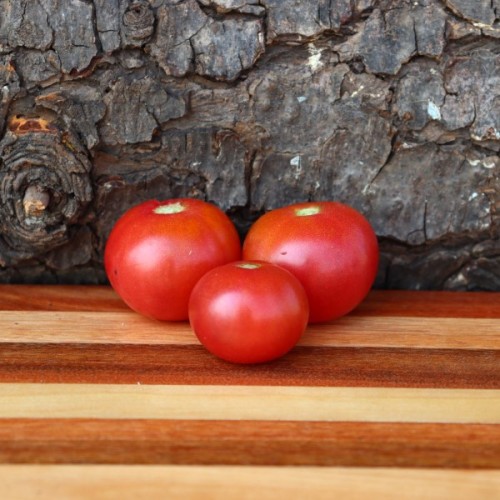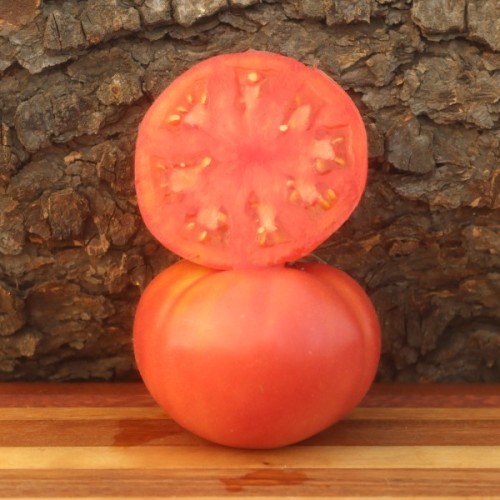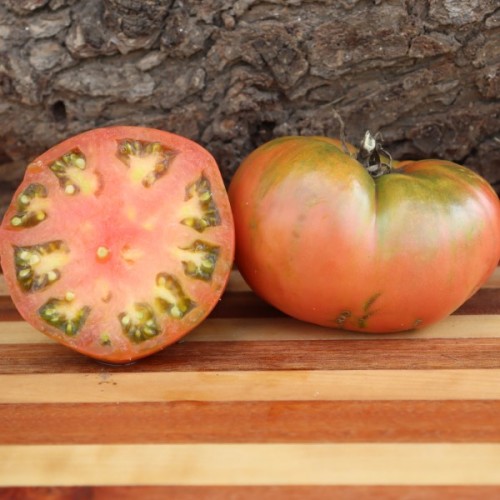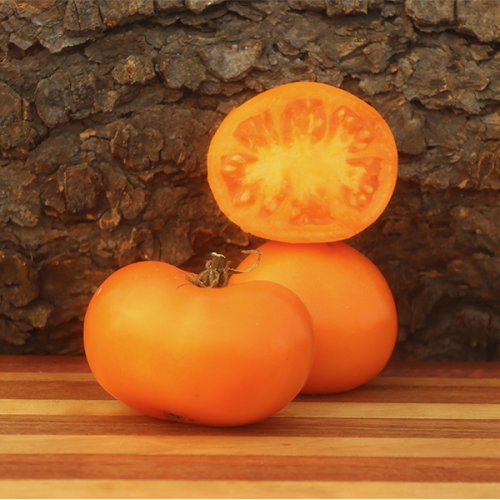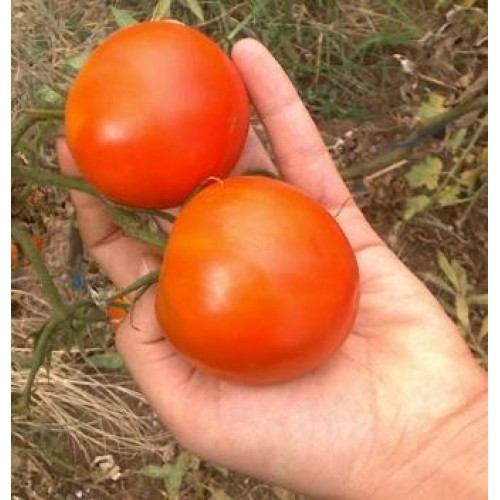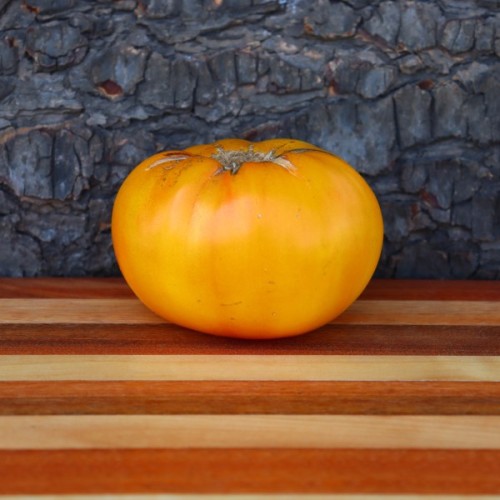Tomatoes
If you're like us, you want to grow tomatoes that taste like tomatoes. And what better way to do that than by growing heirloom and open-pollinated tomatoes? Not only are they delicious, but they also offer a ton of other benefits to the home gardener.
First, heirloom and open-pollinated tomatoes are more genetically diverse than the hybrid varieties you find in stores. This means they're more adaptable to different growing conditions and pests, making them easier to grow in your home garden. Plus, they come in all sorts of shapes, sizes, and colours, creating a beautiful medley in your harvest basket!
But the real benefit? The taste! With complex, distinct flavours and hundreds to choose from, you can try new ones every year and never get bored.
There are two categories of tomato plants:
- Determinate (short-growing): Often referred to as bush-types, they grow to a finite size and produce most of their fruit at once. They generally do not require extra support and do exceptionally well in containers. Popular in shorter-season gardens.
- Indeterminate (vining): Require support for their long vines, which will keep on growing as long as conditions are favourable. Indeterminates can bear quite heavily and over an extended period.
Tomato Growing Guide:
Tomato is a warm-season plant that requires full sun and is frost-tender. Start plants in trays and transplant them two or three times before planting in their permanent place. Plant deeper every transplant to promote extra root growth along the buried stem. Tomatoes are heavy feeders, so give it very rich well-drained soil, and it is recommended to prepare individual planting holes. Plant the trellis or cage for support at the same time as the seedling so that the roots are not damaged afterwards. Adequate spacing is also important for good air circulation, which keeps most diseases at bay. Thirsty tomato plants need regular watering at root level. Always try to keep the leaves dry to prevent disease. To grow larger fruit, pinch out suckers and growing tips when the plant reaches its desired height. This will divert the energy to the fruits instead of the vines.
Refine Search
Blue Cream Berries Tomato
Solanum lycopersicumAnother recent release in "new" tomato colours by renowned Brad Gates. This var..
R29.90
Blue Gold Berries Tomato
Solanum lycopersicumSuper sweet and very low acid for a cherry tomato. These unique tomatoes develop..
R30.27
Blue Gold Tomato
Solanum lycopersicumWhat an eye-catching "mater"! Introduced by Brad Gates from Wild Boar Farms, Cal..
R32.20
Blue Ridge Mountain Tomato
Solanum lycopersicumAn extremely productive heirloom tomato from the Blue Ridge Mountains in the Eas..
R30.27
Blush Tiger Tomato
Solanum lycopersicumOne of our absolute favourite yellow saladette toms – beautiful, delish, and one..
R32.20
Bosque Blue Bumblebee Tomato
Solanum lycopersicumA mid-season open-pollinated variety first cultivated in 2012 by J&L Gardens..
R32.20
Boxcar Willie Tomato
Solanum lycopersicum This heirloom has quite the story – it was thought to be lost until it was s..
R29.90
Brad's Atomic Grape Tomato
Solanum lycopersicumThis is an extraordinary variety from Brad Gates of Wild Boar Farms. Psychedelic..
R29.90
Brandywine Black Tomato
Solanum lycopersicumAn indeterminate beefsteak variety that produces medium to large oblate fruits t..
R30.27
Brandywine Black Tomato (Potato-Leaf)
Solanum lycopersicumThis variety was bred by Dr Harold E. Martin (1888-1959) in the late 1920s. Dr M..
R30.27
Brandywine Cherry Tomato
Solanum lycopersicum Brandywine tomatoes are the ultimate for many. Producers of large, meaty, oh..
R30.27
Brandywine Pink Tomato
Solanum lycopersicumLIMITED STOCK!We on Livingseeds Farm have been growing these for a number of yea..
R19.46
Brandywine Purple Tomato
Solanum lycopersicum If a tomato has Brandywine in its name, you know that it tastes superb, and ..
R30.27
Brandywine Red Tomato
Solanum lycopersicumAn indeterminate potato-leaf variety. These vigorous plants produce large red be..
R30.27
Brandywine Sudduth's Tomato
Solanum lycopersicum Also known as the "Sudduth's Strain," this is a very old and well-known toma..
R30.27
Brandywine Yellow Tomato
Solanum lycopersicum This is the yellow strain of the famous Brandywine tomato. It has the distin..
R32.43
Break O' Day Tomato
Solanum lycopersicum A lovely little heirloom tomato that produces a superabundance of beautifull..
R30.27
Burnley Bounty Tomato
Solanum lycopersicum A lovely variety, well-known and enjoyed by many Australian gardeners. A goo..
R30.27
Burracker's Favorite Tomato
Solanum lycopersicumAn indeterminate beefsteak tomato boasting bi-coloured fruits with hints of yel..
R30.27
Burwood Prize Tomato
Solanum lycospersicumAn Australian family heirloom that has been grown since the 1900s. A potato-lea..
R30.27
